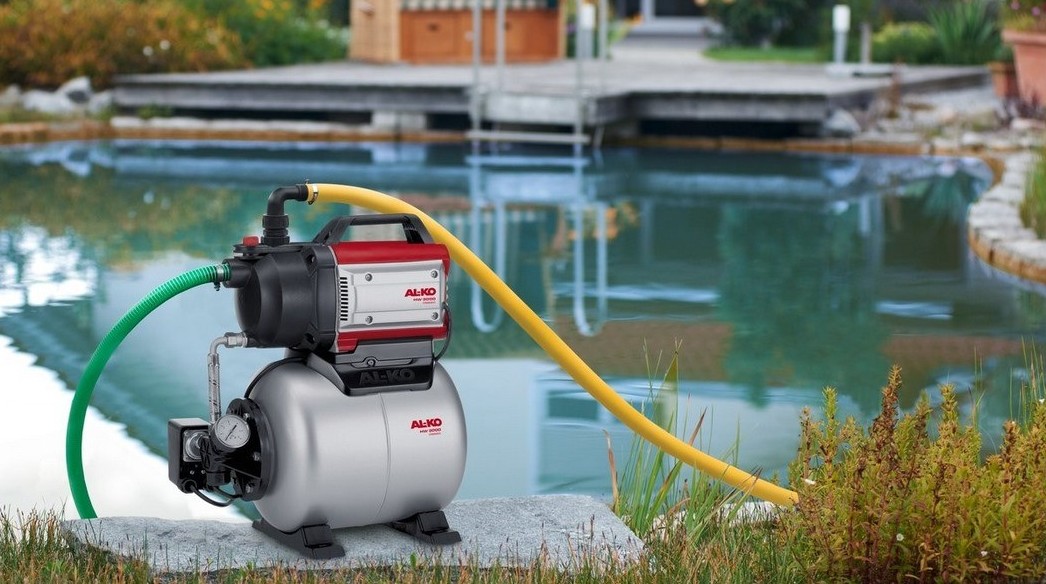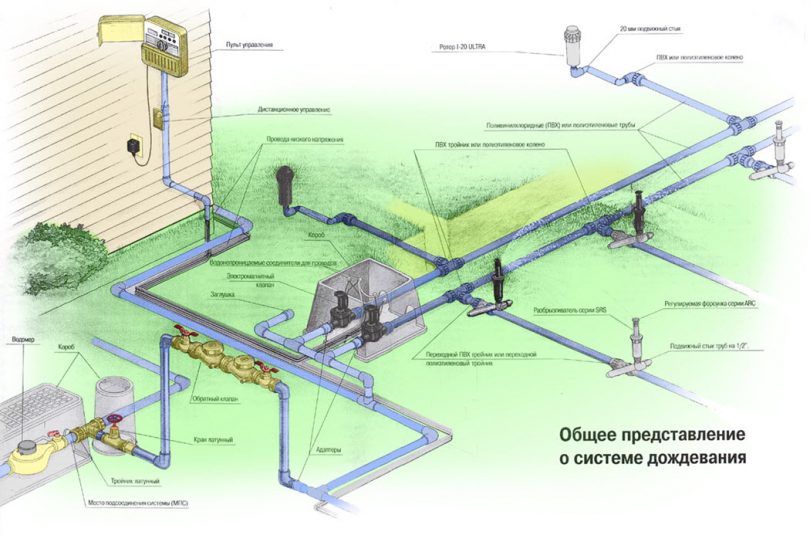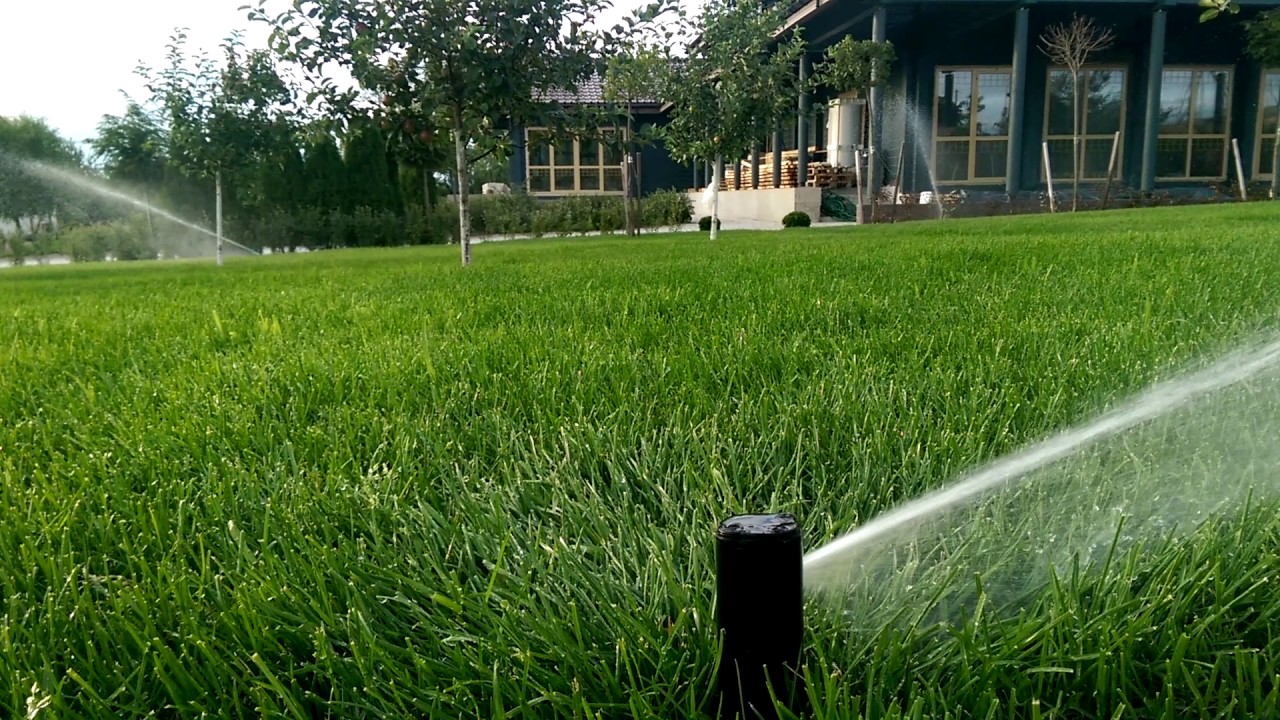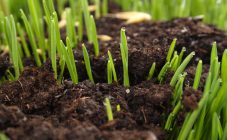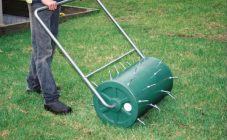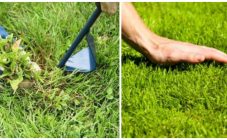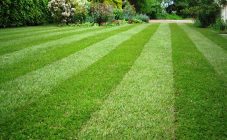Content:
Watering your lawn is one of the mandatory plant care activities that must be performed regularly. Lack of time makes gardeners look for rational ways to moisten the soil. Automatic watering of the lawn is the optimal solution to the problem, regardless of the availability of a water source.
The essence of the autowatering system
The automatic lawn irrigation system is usually installed by specialized firms. But not all gardeners can shell out a tangible amount of money for the purchase of a system, its design. A more economical option is to independently install an automatic irrigation system. Despite the laboriousness, the cost of buying parts and the time spent, a homemade lawn watering system is cheaper than a ready-made one.
Automatic lawn watering can be of 2 types:
- Sprinkler. This is a sprinkler piping layout. Watering is done from above, according to the principle of natural rain.
- Drip. These are flexible, perforated hoses with holes connected to the water intake point. Most often they are located underground. Watering is done directly to the plant roots.
Sprinkler irrigation is perfect for lawns, moisturizing not only the soil, but also the air. This is the most affordable watering method.
Irrigation system device
For self-installation of the lawn automatic irrigation system, you will need to purchase a number of necessary equipment items:
- Pumping station. The device provides the correct pressure. The choice of performance is based on the drawn up project and the calculation of the required water consumption.
- Pressure regulators. Needed if the system includes sprinklers that require different water pressure.
- Fine filters. Protects sprinklers from clogging and failure.
- Solenoid valves and controllers to control the system.
- HDPE pipes. A transport highway is being created.
- Adapters, tees, elbows for connecting pipes.
- Sprinklers (sprayers, sprinklers). They can be non-retractable or retractable. The first type is fixed above the ground surface. Sprinklers of the second type are located in the soil, the retractable mechanism raises them up by 15-20 cm during watering, then lowers them down again.
Sprinkler types
Retractable lawn sprinklers:
- The rotary sprinkler has a stable base and a rotating head. Able to rotate around its axis and capture a radius of 5 to 25 m.
- The static (fan) sprinkler is stationary and operates within a radius of 5 m according to the fountain principle. Some models can be adjusted so that irrigation is carried out according to the configuration of the lawn, 25-360 degrees.
Non-retractable sprinklers:
- The oscillating type is convenient for rectangular lawns. It is a perforated tube that moves along a specific path.
- The impulse sprinkler delivers water in batches.
- The sprinkler hose in the form of a flexible pipe with holes irrigates plantings in all directions at once.
- The circular nozzle evenly sprinkles a radius of 3 to 10 m.
Water intake can be from several sources:
- wells;
- central water supply;
- well;
- open reservoir.
With a consumption of 20 liters of water for each square meter of lawn, 200 liters will be needed at a time for a plot of 10 m2.The water intake from the central water supply system puts a heavy load on the entire water supply network, since the working range for sprinklers is from 2 to 4 atmospheres.
You can install a pumping station with a hydraulic accumulator. The choice of the power of the station, pumps, volume of the tank is carried out on the basis of calculations of the water consumption. If you water at the same time, you can add up the performance of all sprinklers. The pumping station should have a slightly higher capacity (by 10-15%). If this parameter is insufficient for watering the entire area of the lawn, then the process is divided into 2-3 stages.
Design and sketch
The design of an automatic irrigation system begins with an accurate drawing of the lawn on graph paper. The diagram denotes a lawn area, bushes and trees, recreation areas, buildings. As a result, you should get several rectangles.
The next step is to calculate the throughput of the pipeline, since the resource of the water intake point is limited. It is necessary to measure the diameter of the pipe of the water supply source and find out its throughput from the table on the Internet. Then you should determine this parameter in practice. After closing all the branches, you need to calculate the number of liters of water per minute. This determines the suitable pipe diameter.
To find out the optimal mode of simultaneous operation of irrigation lines, you need to find out the area of action of the sprinklers. Typically, for lawn irrigation, static (fan) and rotary (rotating) sprinklers are used. For a large lawn, more static sprinklers will be needed, which will entail purchasing more pipes. Rotary and static type sprinklers should be installed on different lines.
A suitable sprinkler is selected depending on the size and shape of the lawns. It remains to decide how many sprinklers are needed for the entire lawn. The number of sprinklers is determined based on the water consumption for one sprinkler, the capacity of the pumping station, and the number of lawn sectors for irrigation.
It is rational to place sprinklers for the lawn on the plan. For this, circles are drawn with a compass, reflecting the range of the selected sprinklers. Irrigated areas must be fully covered. The lawn sprinklers start at the corner points of the lawns.
This will ensure consistent, even watering of the lawn. The sprinklers installed at the end of the line spray a slightly smaller radius due to the reduced pressure in the pipes.
To facilitate the maintenance of the automation, the sections of the pipeline branching should be concentrated in one place. The valves should be located close to each other. On the plan, you need to mark points with simultaneously operating sprinklers. One valve will be connected to each of these sections.
Having decided on the placement of all sprinklers, a water supply diagram should be developed. It is necessary to calculate the throughput of the water intake. The larger the area of action of the sprinklers, the higher the water demand. Measurement algorithm:
- the hose is connected to the water intake point;
- a bucket with a volume of 10 liters is placed, and the time of its filling is recorded;
- the distance from the water intake point to the most remote point of the site is measured;
- every 15 m require 1 s addition.
The throughput of the water intake must be higher than the total demand of connected and simultaneously operating devices.Places for laying the main pipe and branching should be drawn so that they have a minimum number of bends, directed to the sprinklers along the shortest path. The diameter of the branches must be less than the diameter of the main pipe.
If it is impossible to start the entire system at the same time, you will have to divide it into several branches and cut it off by means of valves. Based on the created documents, you can make an estimate for calculating material costs.
Self-assembly of the irrigation system
The technology for installing the autowatering system is carried out according to the developed plan. To begin with, the lawn area is marked. For this, pegs and a rope are used. The necessary equipment is being installed. The water filter is installed at the outlet of the supply pump.
Then the channels for the pipeline are dug, leveling the bottom. The diameter of the main pipes is 32-40 mm, for the distribution line - 25-32 mm. When cutting, leave a small margin of length. The cross section of the pipes directly at the sprinklers should be the smallest.
The lines of automatic watering of the lawn are recruited, starting from the branch farthest from the water intake. To connect, use adapters, tees, elbows. A depth of about 1 m is recommended, below the level of soil freezing. You can reduce the labor intensity of the work and make a depth of about 30 cm. But then a slight slope is required, at the lowest points drain valves are needed to drain the water before the winter period.
After connecting the entire pipeline and valves, they are laid in trenches. Before filling the lawn watering system with soil, you need to arrange a tightness test. The valves are opened and closed alternately. All faults are eliminated.
If the system has been tested successfully after the water has been applied, holes can be drilled for end bends and sprinklers, screwed on and covered with earth in the trenches. To connect the sprinkler to the main pipe, you will need a cut-off nipple. Splinkers should be located above ground level (except for underground models).
The solenoid programmable valves operate according to the microcomputer and timer settings. They are equipped with a battery so that the program will not be erased when the power is turned off. It is possible to achieve full automation of the irrigation regime by installing 2 sensors: soil moisture on lawns and rain (it is placed away from the sprinklers). If the soil is wet after rain or precipitation occurs, then water will not be supplied.
Irrigation system maintenance
Maintenance of a home-made lawn irrigation system mainly consists in cleaning filters and sprinkler heads from contamination, timely charging the controller battery. In order for a home lawn watering system to work properly for many years, you need to properly prepare it for the winter. The water must be drained, the valves must be blown out, all sensors must be removed into the room.
Lawn watering rates
How often to water the lawn? Recommended watering rate:
- lawn watering regime - every 3 days, in cloudy weather - at least once a week, in case of drought - every day;
- the preferred watering time is morning or evening, when the moisture evaporates with minimal intensity, and the sun's rays are weak and cannot cause burns to the grass;
- the depth of optimal soil saturation with water - from 30 to 50 cm;
- the most acceptable amount of watering is 10-20 l / m2.
How to water the area correctly? The delicate grass of the lawn does not like cold water. The temperature of the water should coincide with the temperature of the air and the ground, that is, be in the range of 18-20 degrees, but not lower than 10 degrees. The water supplied from a well or well is usually too cold. It is recommended to install a storage tank to warm it. Top dressing of the lawn is done after watering or simultaneously with it.
How often to water your lawn also depends on the type of soil. Abundant moisture is required for sandy and light soils. Locating the plot in a sunny, open area also requires more frequent watering. A clear sign that the lawn is drying up - the grass does not straighten out for a long time after walking on it.
Progressive technologies in the field of plant cultivation have presented gardeners with the possibility of automatic irrigation. This system has earned immense popularity, performing the most laborious work efficiently and efficiently. If there is not enough time for self-installation of an automatic irrigation system, you can use the services of professionals. All work on the design, installation and maintenance of the system can be performed by Garden specialists; you can place an order on their official website.
